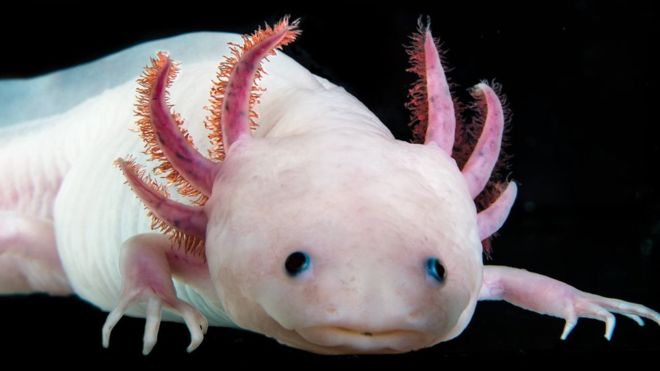|
Scientists have decoded the genome of the axolotl. It has 32 billion base pairs, which makes it ten times the size of the human genome, and the largest genome ever sequenced. "The axolotl, endangered in the wild, has been bred in laboratories and studied for more than 150 years. It has the remarkable capacity to regrow amputated limbs complete with bones, muscles and nerves; to heal wounds without producing scar tissue; and even to regenerate damaged internal organs. " "Now researchers, using one genetic sequencing technique to do their analysis and then another to “proof read” it, have provided researchers with the tools to study and manipulate the genes of the axolotl." The researchers have identified some of the genes involved in regeneration, and some genes that exist only in the axolotl, but there is much work still to be done. Source: nytimes.com Los científicos han decodificado el genoma del ajolote, el cual tiene 32 mil millones de pares de bases, lo que lo hace diez veces más grande que el genoma humano, y el genoma más grande jamás secuenciado. El ajolote está en peligro de extinción en la naturaleza, se ha criado en laboratorios y se ha estudiado durante más de 150 años. Tiene la capacidad notable de volver a crecer las extremidades amputadas completas con huesos, músculos y nervios; curar heridas sin producir tejido cicatricial; e incluso regenerar por completo órganos internos dañados. Ahora los investigadores, utilizando una técnica de secuenciación genética para hacer su análisis y luego otra para "leerla", han proporcionado a los investigadores las herramientas para estudiar y manipular los genes del ajolote. Los investigadores han identificado algunos de los genes implicados en la regeneración y algunos genes que existen solo en el ajolote, pero aún queda mucho por hacer. Fuente: nytimes.com
1 Comment
|
Blog Archive
|

 RSS Feed
RSS Feed
